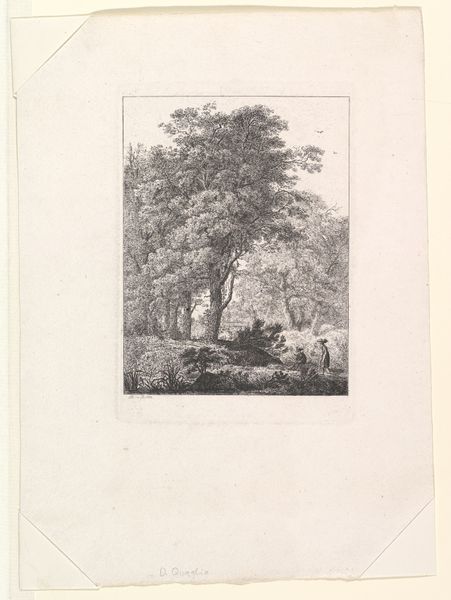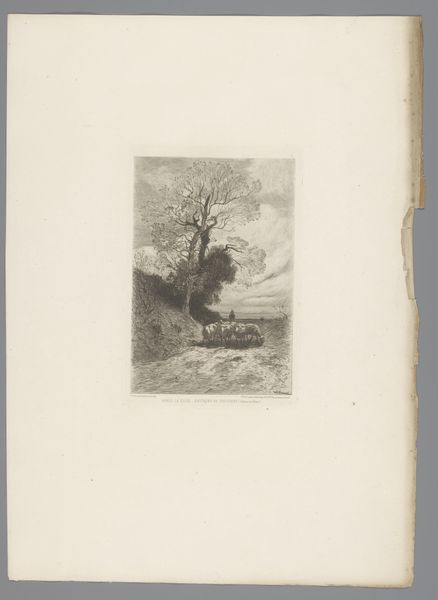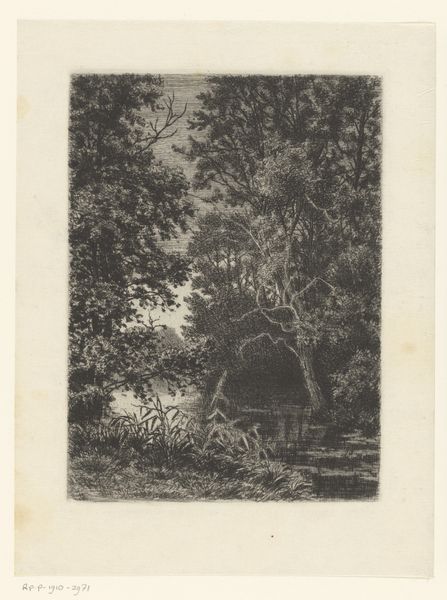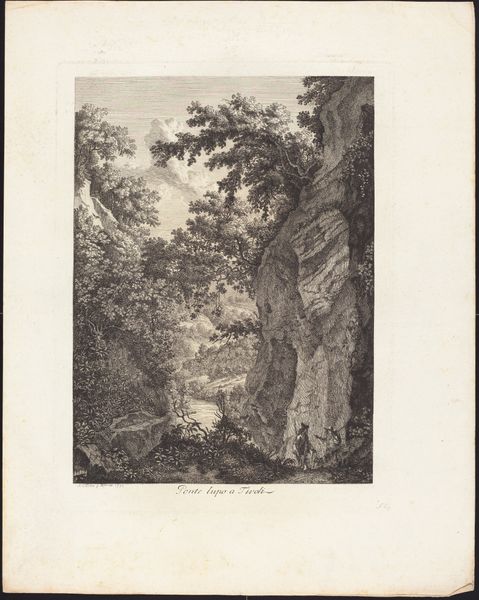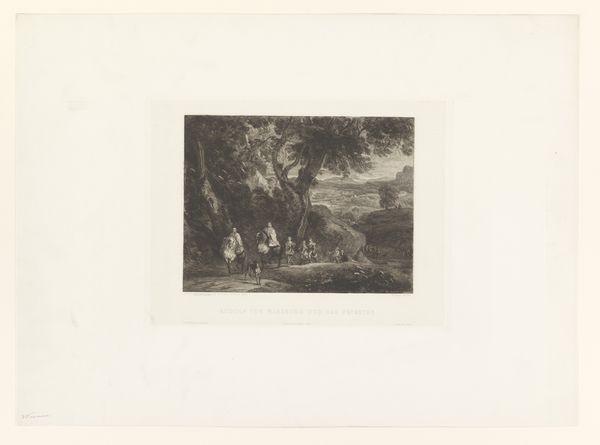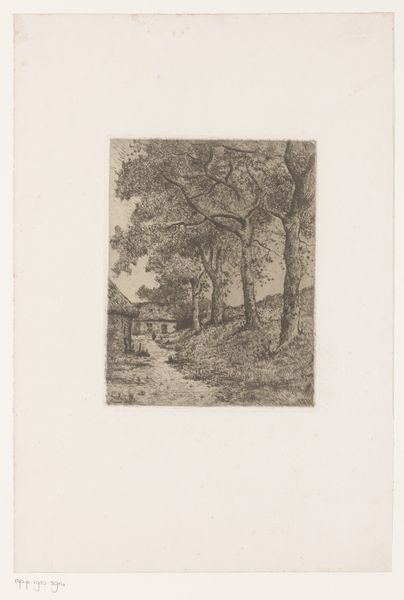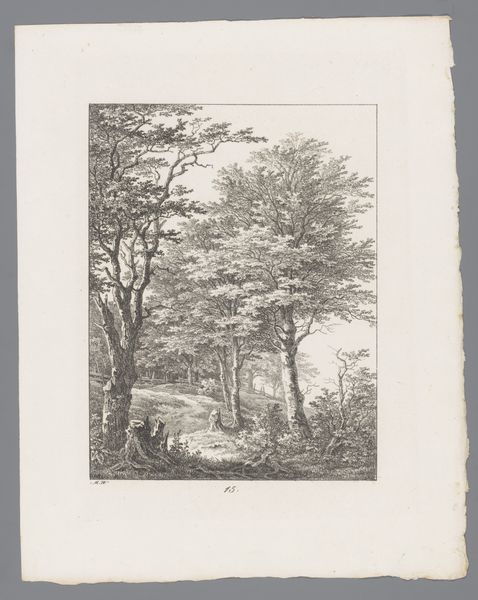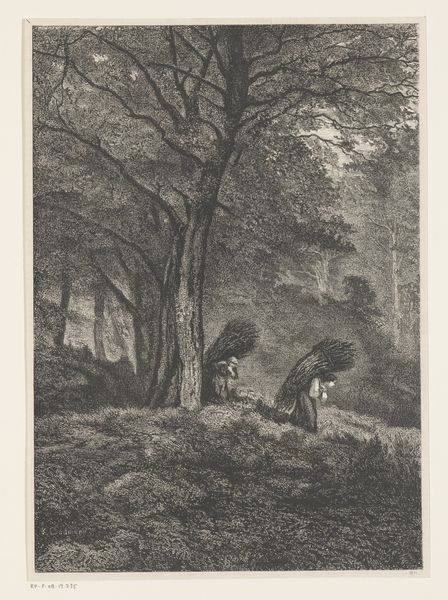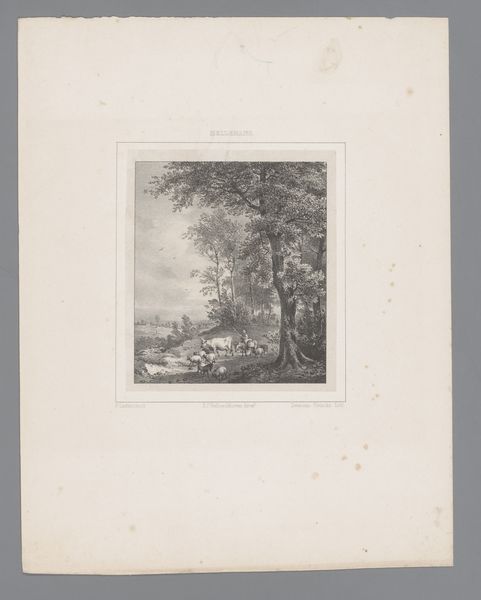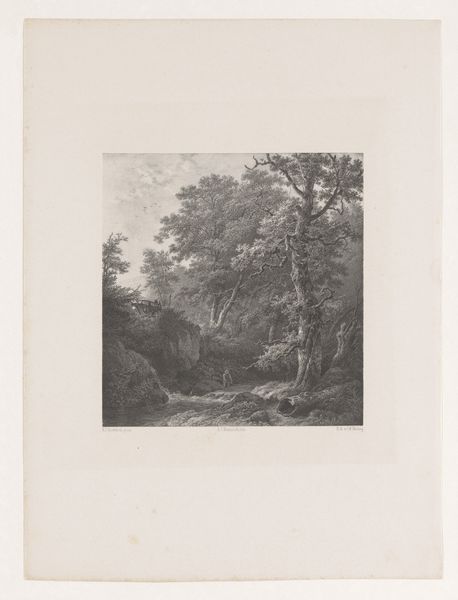
print, etching
#
ink paper printed
# print
#
etching
#
landscape
#
romanticism
#
genre-painting
#
history-painting
#
monochrome
Dimensions: height 257 mm, width 184 mm
Copyright: Rijks Museum: Open Domain
Editor: Here we have "Hagenpreek van de Hugenoten," or "The Huguenot Sermon," an etching from 1850 after Charles Billoin. It's printed with ink on paper and evokes a secretive and somewhat somber mood. How would you interpret this piece? Curator: As a print, consider the reproducibility of this image. The materials themselves—ink, paper, the etching process—allowed for dissemination. This wasn't a unique, singular object. It suggests the spread of information, ideas. Given its title, we can assume it depicts a Protestant sermon during a period of persecution. The act of printing such an image becomes a form of resistance, wouldn’t you agree? How do the material realities of its production inform its meaning? Editor: That’s interesting. The fact that it could be reproduced and circulated would definitely empower a marginalized community. So, in this view, the printmaking process becomes an act of defiance? Curator: Precisely! The choice of etching, a process involving labor-intensive work on a metal plate, speaks volumes. What implications do you think we can draw from it? Consider also, how does the "monochrome" style serve the social, religious, and political needs of the artwork and the audience? Editor: Perhaps the intricacy of the etching mirrors the commitment and risk involved in practicing Protestantism at the time. And in terms of monochrome, perhaps to not stir up unwanted attention through vibrancy. Curator: An insightful connection. Look at how the print mediates the historical event and transforms it into something accessible. Does that suggest a relationship to craft practices, folk art traditions and community resilience through making? Editor: Absolutely. It's not just an image; it's a material embodiment of a specific historical and social context, reflecting the struggles and resilience of a community. Curator: Exactly. The act of making, distributing, and viewing the print becomes an integral part of understanding its significance.
Comments
No comments
Be the first to comment and join the conversation on the ultimate creative platform.
